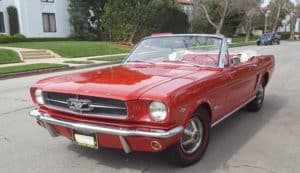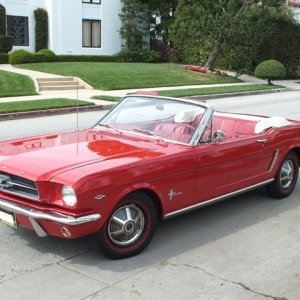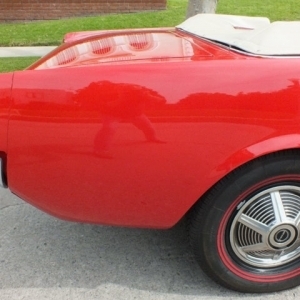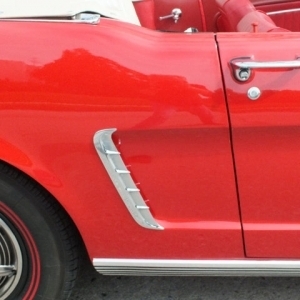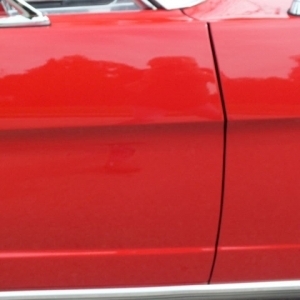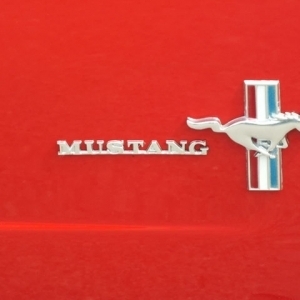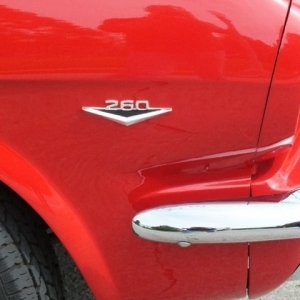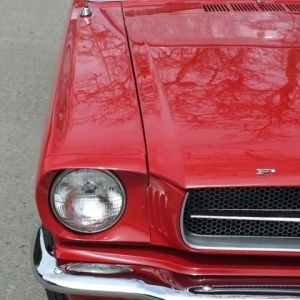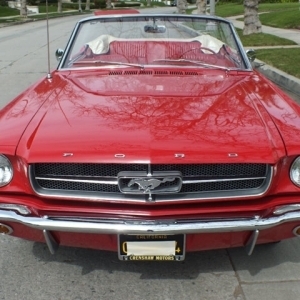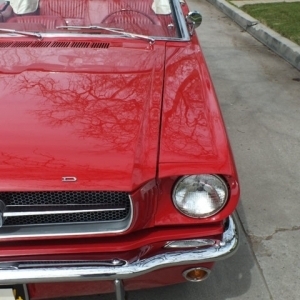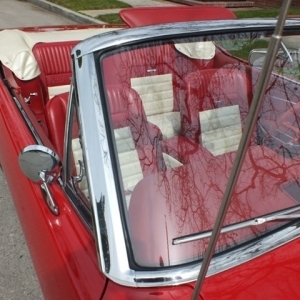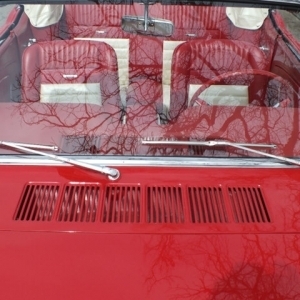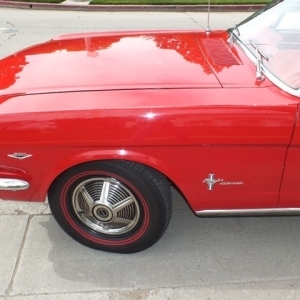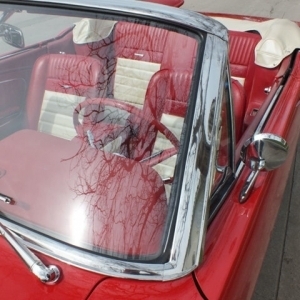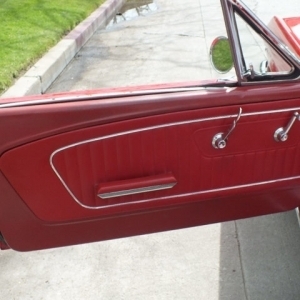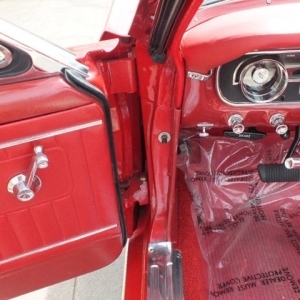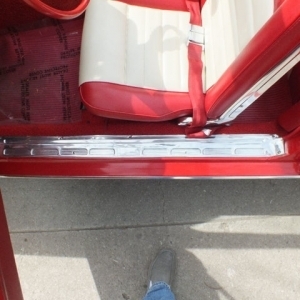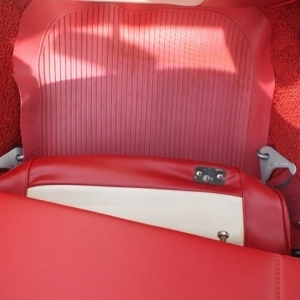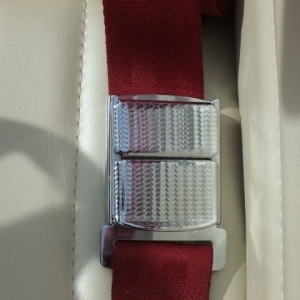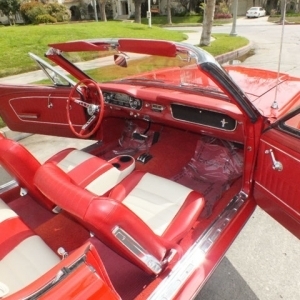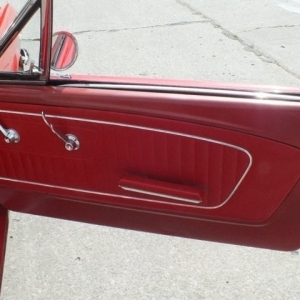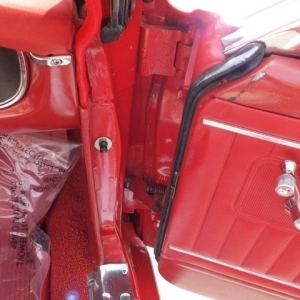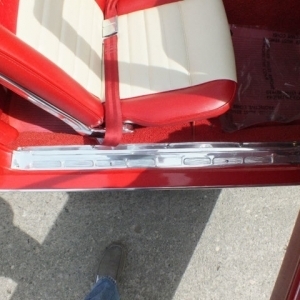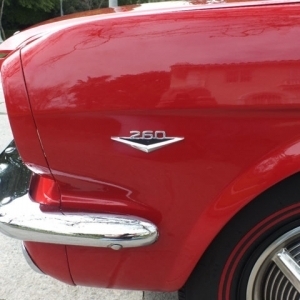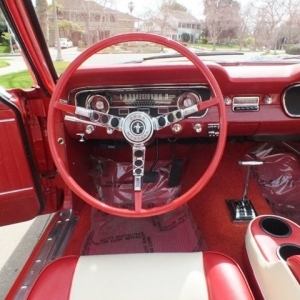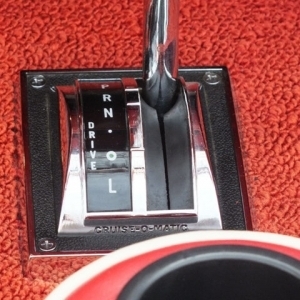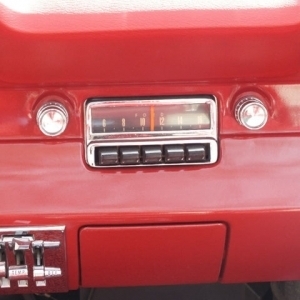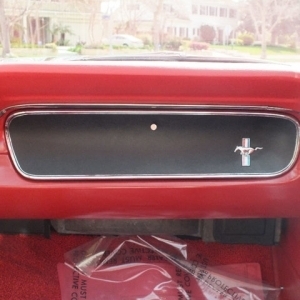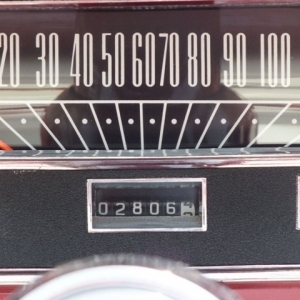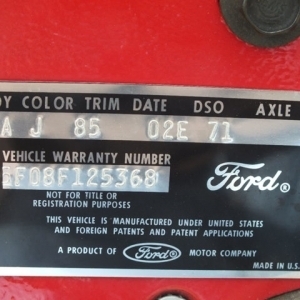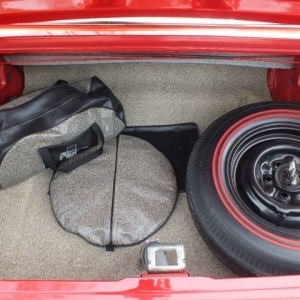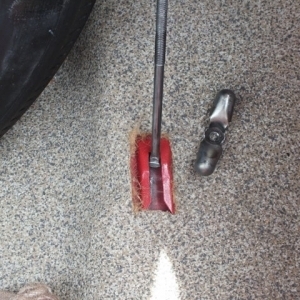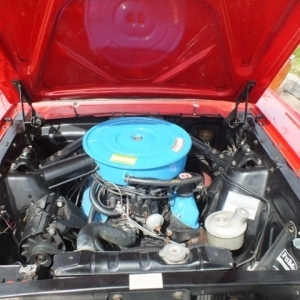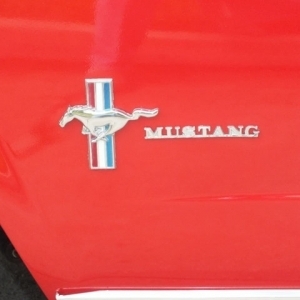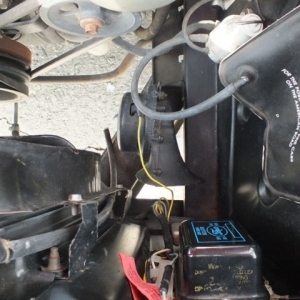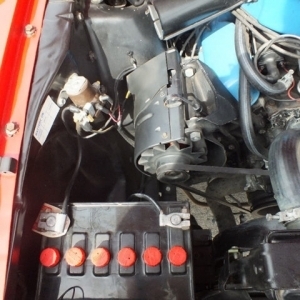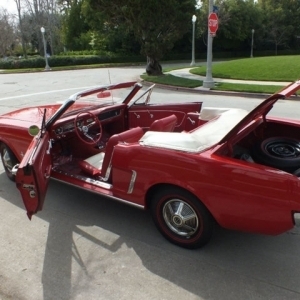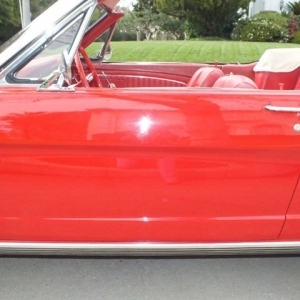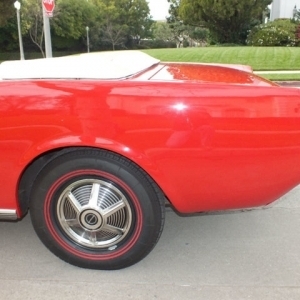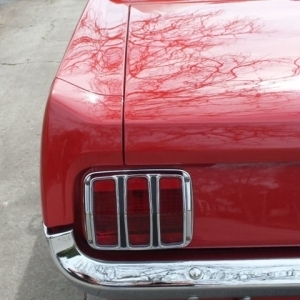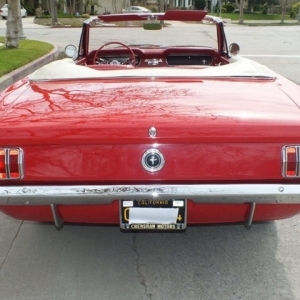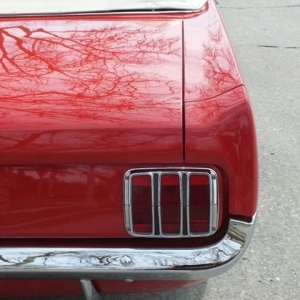1964 1/2 Ford Mustang Convertible For Sale
Call Arthur: 323.467.2777
Only 2800 Miles Since The Frame-Off, Nut And Bolt Restoration Was Completed In '08
All Numbers Matching
A Real '64 1/2....Production Date: May 2nd 1964
The Previous Owner, A Former Executive Of The Mustang Owners Club of California, Wanted To Build A Concourse Level Driver.
We Believe He Succeeded And You Will Too.
Solid Ride And Feel, No Rattles And Arrow Straight Tracking.
Gaps Are As Close To Perfect You Can Get
Red And White Pony Interior Can Be Replaced With The Original Solid Red Seats
Which Are Currently In Storage And Included With Purchase...
4, Period Correct, Poly Tires Also Included.
Here's Your Chance To Own A Truly.... Drivable Work Of Art.
Call For Many More Details Or To Arrange An Inspection.
Call Arthur: 323.467.2777
The Classic Ford Mustang is an American beauty. When you see a vintage Mustang, you can’t help but admire its stunning characteristics of one of the greatest American cars ever built. The popularity of this classic automobile still holds true today. Many may wonder about the first produced Mustangs and exactly what the difference is between a 1964 1/2 Mustang and a 1965 Mustang.
There actually aren’t any Mustangs that are stamped “1964”. They all carry a “5” in the VIN number, designating a “1965”. Mustang Coupe and Convertible production began in April 1964. It is still unclear as to exactly when Fastback production started, but it appears to be sometime in the summer of 1964.
The first Coupes and Convertibles that were manufactured had the engine codes C, D, F, K or U. When the early D, F and U engines were being phased out, the Fastback production was just beginning.
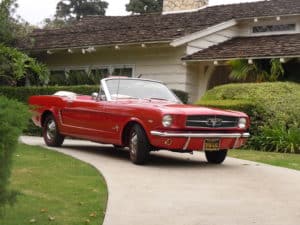 As the first Fastbacks rolled down the assembly line, some may have been outfitted with the last remaining early engines available. Therefore, the firs
As the first Fastbacks rolled down the assembly line, some may have been outfitted with the last remaining early engines available. Therefore, the firs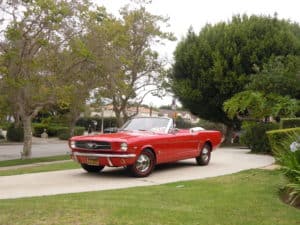 t
t
Fastbacks may have had engine codes D, F or U. As production continued and these early engines ran out, engines with codes A, C, K and T were used. The K code engine was available from 1964 up until 1967.
It can be difficult to prove a true 1964 1/2 Mustang, but any early Mustang with a D, F or U engine code is definitely a 1964 1/2 Mustang. Mustangs with engine codes A or T are considered 1965’s. Mustangs with the C or K code engine option could be either a 1964 1/2 or a 1965 Mustang. It is important to check the build date on the door tag. This date gives further information as to when the car was assembled.
There is also a “gray area” when explaining the differences between 1964 1/2 and 1965 Mustangs. The very earliest 1965’s could have some of the 1964 1/2 parts installed on them. These parts were put on 1965’s until the parts were phased out, similar to the engines being phased out. Some of the unique characteristics of the first parts include the following:
- HEADLIGHT EXTENSIONS AND HOODS: The first manufactured headlight extensions had a beveled edge along the top. The front corners of the hood skin remained un-pinched around the hood frame. This un-pinched flange pointed straight down to fill a gap that was caused by the beveled headlight extension (1965 headlight extensions did not carry this beveled edge; therefore the hood skins were pinched).
- RADIATOR CORE SUPPORT: The first manufactured core supports had three long vertical slots near the battery (1965 core supports had four elongated oval slots).
- HORN STYLE AND MOUNTING LOCATION: The first manufactured Mustang horns were quite large and mounted down on the strut rod frame rails near the bottom inside corners of the radiator (1965 horns were considerably smaller and mounted on the core support near the top outside corners of the radiator).
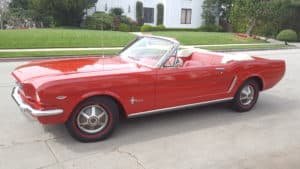
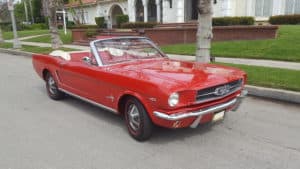
- FASTBACK REAR INTERIOR STEEL TRIM: The first manufactured Fastback rear trim wrapped around the interior’s fiberglass panels. This steel trim extended from under the rear window, around the fiberglass interior panels and stopped about 1 1/2 inches short of the door glass (1965 steel trim extended all the way to the door glass).
- AUTOMATIC TRANSMISSION SHIFTER HANDLE: The first manufactured AT shifter handles were quite small (1965 AT shifter handles are the same shape, but about 50% larger than the early ones).
- PASSENGER SEAT: The first manufactured passenger seats were not adjustable to move forward or backward. There was not any sliding track mechanism on the mounting hardware (1965 passenger seats had full front to rear sliding adjustment).
- SHORT CARPET: The first manufactured carpet did not climb up the rocker panel. It stopped at the rocker and had an embroidered edge. The rocker was then covered with vinyl to match the interior (1965 carpet climbed up the rocker panel and was covered by the door sill plate).
- FLOOR PAN: The first manufactured floor pans had staggered seat belt mounting holes along the transmission tunnel for the front seats. The passenger seatbelt mounting hole was the furthest forward to accommodate the non-adjusting seat. These floor pans were not immediately phased out. I actually have mid-year 1965 Mustangs with staggered holes (Most mid-year and later 1965 floor pans had evenly spaced seat belt mounting holes).
- SEAT RISERS: The first manufactured seat risers had a large oval cutout in the center. (1965 seat risers had a solid top).
